Showing Spotlights 337 - 344 of 627 in category All (newest first):
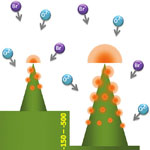 In recent years various bottom-up processes (such as growth techniques) and top-down processes (such as electron beam, lithography, nanoimprint) have been used to produce one dimensional nanostructure on semiconductor substrate. All these approaches involve nanoscale prepatterning or extreme fabrication conditions; hence, they are often limited by associated high cost and low yield. In a novel nanomanufacturing process known as Simultaneous Plasma-Enhanced Reactive Ion Synthesis and Etching (SPERISE), researchers have integrated both nanoscale bottom-up synthetic and top-down etching approach. This eliminates the expensive prepatterning steps and hence give rise to ultrahigh throughput, better reliability, high yield and above all, low cost.
In recent years various bottom-up processes (such as growth techniques) and top-down processes (such as electron beam, lithography, nanoimprint) have been used to produce one dimensional nanostructure on semiconductor substrate. All these approaches involve nanoscale prepatterning or extreme fabrication conditions; hence, they are often limited by associated high cost and low yield. In a novel nanomanufacturing process known as Simultaneous Plasma-Enhanced Reactive Ion Synthesis and Etching (SPERISE), researchers have integrated both nanoscale bottom-up synthetic and top-down etching approach. This eliminates the expensive prepatterning steps and hence give rise to ultrahigh throughput, better reliability, high yield and above all, low cost.
Oct 3rd, 2011
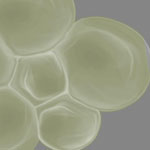 Along with graphene, atomically thin sheets and ribbons of boron nitride (often called "white graphene") have increasingly attracted fundamental research interest. While researchers make good progress on developing techniques for mass-producing graphene, it is still a challenge to reliably chemically delaminate and/or exfoliate boron nitride and to realize mass production of atomically thin sheets made of this material. Researchers in Japan have now reported a new approach for synthesizing boron nitride monolayers which pretty much works like blowing a balloon; although these balloons are sized in a range of tens of micrometers. The new technique solves the problem of low-throughput fabrication of 2D crystals.
Along with graphene, atomically thin sheets and ribbons of boron nitride (often called "white graphene") have increasingly attracted fundamental research interest. While researchers make good progress on developing techniques for mass-producing graphene, it is still a challenge to reliably chemically delaminate and/or exfoliate boron nitride and to realize mass production of atomically thin sheets made of this material. Researchers in Japan have now reported a new approach for synthesizing boron nitride monolayers which pretty much works like blowing a balloon; although these balloons are sized in a range of tens of micrometers. The new technique solves the problem of low-throughput fabrication of 2D crystals.
Sep 19th, 2011
 Bio-conjugated nanoparticles are important analytical tools with emerging biological and medical applications. Especially gold nanoparticles are of increasing interest for nanobiotechnology research and applications because of their high acceptance level in living systems and the fact that they are fairly easily conjugated with functional molecules. Ultrashort pulsed laser ablation represents a powerful tool for the generation of pure gold nanoparticles avoiding chemical precursors, reducing agents, and stabilizing ligands. The bare surface of the charged nanoparticles makes them highly available for functionalization and as a result especially interesting for biomedical applications. Starting today, such conjugates are available commercially for the first time.
Bio-conjugated nanoparticles are important analytical tools with emerging biological and medical applications. Especially gold nanoparticles are of increasing interest for nanobiotechnology research and applications because of their high acceptance level in living systems and the fact that they are fairly easily conjugated with functional molecules. Ultrashort pulsed laser ablation represents a powerful tool for the generation of pure gold nanoparticles avoiding chemical precursors, reducing agents, and stabilizing ligands. The bare surface of the charged nanoparticles makes them highly available for functionalization and as a result especially interesting for biomedical applications. Starting today, such conjugates are available commercially for the first time.
Sep 15th, 2011
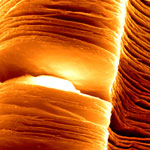 Clean and affordable energy generation and storage is one of the most significant challenges that our world is facing in the 21st century. Materials are going to play a crucial role in generation and storage of renewable energy. While searching for new materials for electrical energy storage, materials scientists have discovered a new family of two-dimensional compounds proposed to have unique properties that may lead to ground-breaking advances in energy storage technology. Researchers transformed three dimensional titanium-aluminum carbide into a two dimensional structure with greatly different properties. This work opens the door for a wide range of metal carbide and/or nitride compositions in form of 2-D sheets.
Clean and affordable energy generation and storage is one of the most significant challenges that our world is facing in the 21st century. Materials are going to play a crucial role in generation and storage of renewable energy. While searching for new materials for electrical energy storage, materials scientists have discovered a new family of two-dimensional compounds proposed to have unique properties that may lead to ground-breaking advances in energy storage technology. Researchers transformed three dimensional titanium-aluminum carbide into a two dimensional structure with greatly different properties. This work opens the door for a wide range of metal carbide and/or nitride compositions in form of 2-D sheets.
Aug 29th, 2011
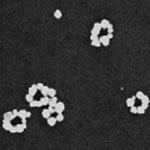 DNA origami is a design technique that is used by nanotechnology researchers to fold DNA strands into something resembling a programmable pegboard on which different nanocomponents can be attached. These DNA assemblies allow the bottom-up fabrication of complex nanostructures with arbitrary shapes and patterns on a 100 nm scale. For instance, DNA origami have been heralded as a potential breakthrough for the creation of nanoscale circuits and devices. DNA can also be metallized with different metals, resulting in conducting nanowires. Researchers have now have developed a method to assemble metallic nanocircuits with arbitrary shapes, by attaching metallic nanoparticles to select locations of the DNA origami and then fusing them to form wires, rings, or any other complex shape. These pre-designed structures are programmed by fully utilizing the self-assembling and recognition properties of DNA.
DNA origami is a design technique that is used by nanotechnology researchers to fold DNA strands into something resembling a programmable pegboard on which different nanocomponents can be attached. These DNA assemblies allow the bottom-up fabrication of complex nanostructures with arbitrary shapes and patterns on a 100 nm scale. For instance, DNA origami have been heralded as a potential breakthrough for the creation of nanoscale circuits and devices. DNA can also be metallized with different metals, resulting in conducting nanowires. Researchers have now have developed a method to assemble metallic nanocircuits with arbitrary shapes, by attaching metallic nanoparticles to select locations of the DNA origami and then fusing them to form wires, rings, or any other complex shape. These pre-designed structures are programmed by fully utilizing the self-assembling and recognition properties of DNA.
Aug 11th, 2011
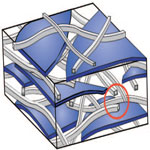 Super-tough materials with exceptional mechanical properties are in critical need for applications under extreme conditions such as jet engines, power turbines, catalytic heat exchangers, military armors, airplanes, and spacecraft. Researchers involved in improving man-made composite materials are trying to understand how some of the amazing high-performance materials found in nature can be copied or even improved upon. Nature has evolved complex bottom-up methods for fabricating ordered nanostructured materials that often have extraordinary mechanical strength and toughness. The main problem in making nanocomposite materials is how the separate components can be interfaced without losing the good properties of each component. Researchers were now able to show that biomolecules that may seem soft and fragile can actually strengthen a composite material by creating cohesion between two materials that differ much from each other.
Super-tough materials with exceptional mechanical properties are in critical need for applications under extreme conditions such as jet engines, power turbines, catalytic heat exchangers, military armors, airplanes, and spacecraft. Researchers involved in improving man-made composite materials are trying to understand how some of the amazing high-performance materials found in nature can be copied or even improved upon. Nature has evolved complex bottom-up methods for fabricating ordered nanostructured materials that often have extraordinary mechanical strength and toughness. The main problem in making nanocomposite materials is how the separate components can be interfaced without losing the good properties of each component. Researchers were now able to show that biomolecules that may seem soft and fragile can actually strengthen a composite material by creating cohesion between two materials that differ much from each other.
Aug 8th, 2011
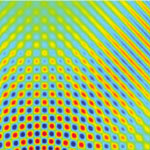 Exotic artificial composite materials called metamaterials can be engineered with certain electromagnetic properties that allows them to act as invisibility cloaks. These materials bend all light or other electromagnetic waves around an object hidden inside a metamaterial cloak, to emerge on the other side as if they had passed through an empty volume of space. Researchers have already been experimenting with cloaking devices for various, usually longer wavelengths such as microwave or infrared waves. Recently, even graphene has been added to the family of cloaking materials. Now, for the first time, a team of scientists at UC Berkeley have devised an invisibility cloak material that hides objects from detection using light that is visible to humans.
Exotic artificial composite materials called metamaterials can be engineered with certain electromagnetic properties that allows them to act as invisibility cloaks. These materials bend all light or other electromagnetic waves around an object hidden inside a metamaterial cloak, to emerge on the other side as if they had passed through an empty volume of space. Researchers have already been experimenting with cloaking devices for various, usually longer wavelengths such as microwave or infrared waves. Recently, even graphene has been added to the family of cloaking materials. Now, for the first time, a team of scientists at UC Berkeley have devised an invisibility cloak material that hides objects from detection using light that is visible to humans.
Aug 3rd, 2011
 Structural color - where the color results from interferences, not pigments - is a natural fit for new display technologies and writing substrates since it can provide vivid colors in environments of high intensity light (e.g. sunlight) without the need for additional illuminating power. Most existing display technologies such as LCDs and LEDs require power to actively project colors and often suffer from performance degradations in these reflective environments. Recognizing this, researchers have developed a number of techniques for dynamically and spatially modulating the colors reflected off of photonic crystal-like substrates. In new work, researchers have demonstrated an electrical-power-free infusion technique that allows them to draw multi-color images on colloidal photonic crystal substrates using transparent imaging oils.
Structural color - where the color results from interferences, not pigments - is a natural fit for new display technologies and writing substrates since it can provide vivid colors in environments of high intensity light (e.g. sunlight) without the need for additional illuminating power. Most existing display technologies such as LCDs and LEDs require power to actively project colors and often suffer from performance degradations in these reflective environments. Recognizing this, researchers have developed a number of techniques for dynamically and spatially modulating the colors reflected off of photonic crystal-like substrates. In new work, researchers have demonstrated an electrical-power-free infusion technique that allows them to draw multi-color images on colloidal photonic crystal substrates using transparent imaging oils.
Aug 2nd, 2011
 In recent years various bottom-up processes (such as growth techniques) and top-down processes (such as electron beam, lithography, nanoimprint) have been used to produce one dimensional nanostructure on semiconductor substrate. All these approaches involve nanoscale prepatterning or extreme fabrication conditions; hence, they are often limited by associated high cost and low yield. In a novel nanomanufacturing process known as Simultaneous Plasma-Enhanced Reactive Ion Synthesis and Etching (SPERISE), researchers have integrated both nanoscale bottom-up synthetic and top-down etching approach. This eliminates the expensive prepatterning steps and hence give rise to ultrahigh throughput, better reliability, high yield and above all, low cost.
In recent years various bottom-up processes (such as growth techniques) and top-down processes (such as electron beam, lithography, nanoimprint) have been used to produce one dimensional nanostructure on semiconductor substrate. All these approaches involve nanoscale prepatterning or extreme fabrication conditions; hence, they are often limited by associated high cost and low yield. In a novel nanomanufacturing process known as Simultaneous Plasma-Enhanced Reactive Ion Synthesis and Etching (SPERISE), researchers have integrated both nanoscale bottom-up synthetic and top-down etching approach. This eliminates the expensive prepatterning steps and hence give rise to ultrahigh throughput, better reliability, high yield and above all, low cost.
 Subscribe to our Nanotechnology Spotlight feed
Subscribe to our Nanotechnology Spotlight feed





